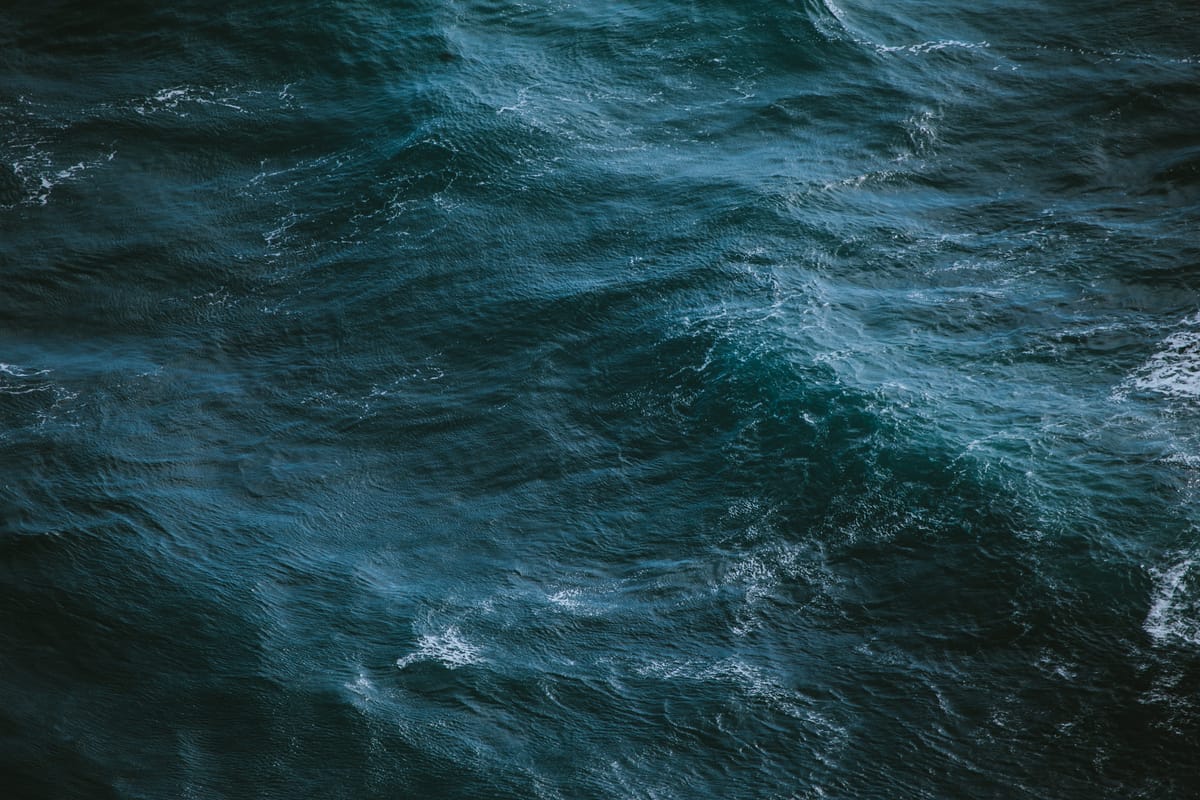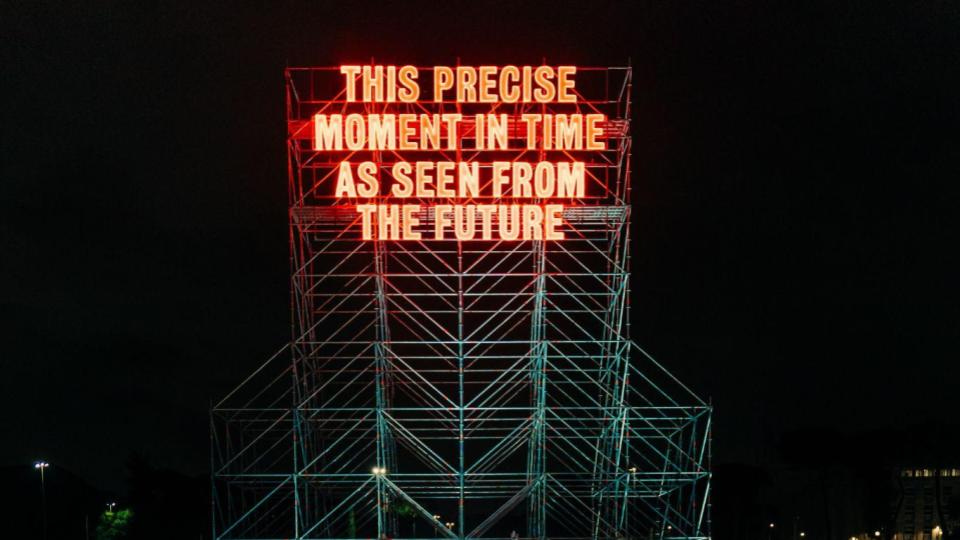Toward Ontogenetic Resilience
Hang Ten: Comments delivered for #NewMacy at ISSS2020

The following are remarks prepared for part one of the two #NewMacy events held during ISSS2022 (The Conference of the International Society for the Systems Sciences) On July 9-10, 2022. More remarks from the #NewMacy sessions can be found here.
One way we shape systems is through the design of those systems. Another way we shape them is through the stories we tell ourselves about those systems. Stories orient us. They reveal or conceal arrays of possible action and movement. Stories are ontological machines, they “make sense." A story situates us somewhere in a beginning, middle, or end. When we find our place within this story-system, we have a sense that we will be ok. The story will persist, and the next story will come.
A friend of mine writes & teaches story craft for television. TV is organized as a continuing series of episodes following a linear story structure: this happened, then this happened, then this happened. We’ve talked before about what stories are and what they do. She told me to think of this sentence: "The cat runs up the tree." It’s not a story, she said. It’s a statement. There is no beginning, middle, or end. To make that cat into a story we have to chase it out of the tree or know how it got there.
As soon as we do, we "make sense" — we offer a continuity, through which an action has an effect. Knowing the causes and effects of things, she noted, is comforting. Without it, a cat in a tree is trapped in stasis and tension. Suspense is a "suspension" of meaning: if we don’t know the story, we don’t know what things mean.
When Anthony Giddens wrote his work on Ontological Security, he described it as:
…the continuity of identity within people and within a host of systems, such as nation-states, and other institutions. Identity, which human psychology tends (wrongly) not to view as malleable, can trigger fear of the ultimate discontinuity, the end of our identity altogether: “reflexively understood by the person in terms of her or his biography.” (1991, 53).
As a quick glance at the shocks of the 21st century will show us, we are all cats stuck in a tree with little sense of how we got there or how to get down. Discontinuity has become reliable. We will survive not by predicting what happens tomorrow, but by bracing for the unexpected. Ontological security becomes an ontological insecurity through massive political, ecological, social and interpersonal upheavals, particularly when the forces we relied upon for security are beyond the scope of personal control: global problems, brought to us by global media systems, overwhelm us.
Yet, the challenge embedded into the human mind is that this desire for the reliable leads us to see the world in ways that dismiss or reject change and its underlying causes. Humans deny climate change and vast ecological destruction, invent new realities to replace uncomfortable truths, accept and reject ideas based on pre-existing ideological alignments rather than rational evaluations of evidence.
We’ve lost hope of “now” guiding us to a predictable “then.” We are cats in a tree: stuck without ladders, with few paths toward resolution. We don’t know where the story goes and we don’t know what the story means.
In lieu of ontological security, we today propose Ontogenetic Resilience — an identity oriented not toward static being, but toward becoming. Ontogenetic resilience moves us away from passive subjects anchored by the stability of institutions. Instead, we see new currents creating new meanings, and a sense of identity as adaptive stewards of the systems we are embedded in. Ontogenetic resilience activates suspense — the suspension of narrative certainty — as a mechanism of exploration, thoughtfulness, action, and growth.
To re-weave communities in ways that support this resilience requires a rearrangement of purpose. We find stability not in the resolution of a linear story, but in our collective capacity to shape and make sense from suspense.
Willis Overton has written about the distinction between “I mean” and “It means.” To say “I mean” is to declare our own intent. To do so isolates us, it splits us apart from the world, forming the “me” that creates narratives of selfhood central to our sense of ontological security. The “It means,” on the other hand, emerges from systems and relationships. In safe conditions, these two can coexist. But when relationships become threats and the narration makes “no sense,” the binary choice is to withdraw from those connections. We isolate within the meaning of one’s self. For Giddens, this search for ontological security demands an identity of our own construction, but is more often met by clinging to expiring reassurances of a stable and continuing worldview. The anti-social relationships of misinformation, cults, or extremist political movements rooted in the glorification of nostalgia appear to be “collective” communities but are radically isolating: they offer no tools to grow or to arrive at the acceptance of change.
Heinz von Foerster offered two “undecidable questions” in Ethics and Second-Order Cybernetics:
Am I apart from the universe? That is, whenever I look I am looking as through a peephole upon an unfolding universe. Or: Am I part of the universe? That is, whenever I act, I am changing myself and the universe as well.” Whenever I reflect upon these two alternatives, I am surprised again and again by the depth of the abyss that separates the two fundamentally different worlds that can be created by such choices. (1994)
Cybernetics proposes a few tools for these distinctions. It offers a way of seeing ourselves through embeddedness into the systems around us. In cybernetics, the individual and the group are two frames that inform and influence each other. They are distinct but mutually constructive, allowing for reflexivity and movement. A “lens” is a cliché, but a defensible metaphor: the edges can become blurry or sharp depending on your selected focus. But what becomes blurry doesn’t cease to be. As the focus shifts to include or exclude the rituals that provide us reassurances, we grasp for a constant crispness such that our boundaries hardly waver.
Ontogenetic Resilience suggests a way of living between this softening and hardening of focus, the movement that takes place in the refraction of a lens. Resilience is when we accept the continuation of the story, even when we are out of its focus. Resilience opens a space of possibilities.
Surfing develops the muscles needed to balance ourselves on shifting currents. Resilience lets us surf between the fuzzy borders of ourselves and others.
Deleuze and Guattarri, themselves influenced by Humberto Maturana and Francisco Varela, wrote at length about the impossibility of transcendence, because to transcend is to become distinct from. Instead, we are forever embedded — part of — through what they term immanence.
To give consistency without losing anything of the infinite is very different from the problem of science, which seeks to provide chaos with reference points, on condition of renouncing infinite movements … Philosophy, on the other hand, proceeds … by instituting the plane of immanence [embeddedness]: it is the plane’s variable curves that retain the infinite movements, that turn back on themselves in incessant exchange, but which also continually free other movements.
We’ve lost the curves for their reference points. And in staking our identity to only the most recognizable and finite points, we slip away from the heaviest of all anchors: the infinite. The infinite, which offers no comfort to an identity, because identity, the lives we live and the stories we make of them, can be beautiful, orienting, and fleeting. Nonetheless, identities are never fixed or static. To trap ourselves within ourselves is to become a dancer who does not move, a surfer rocked by endless waves.
Ontogenetic resilience means sustainably preserving a state of becoming. This is in contrast with ontological security, which we seek through the preservation of what we have already become. Many of the problems we face today — in the 21st Century and in the next few hours of this workshop — benefit from giving up on the search for “solutions,” and turning away from the idea of some thing or state our world might become. Instead of solutions, we propose navigation: surfing! Then our question moves from “how do we solve” and becomes: “how do we surf the endless change, and learn to lean in and out of resistance, refusal, acceptance, withdrawal, or rest?” As we surf among slipstreams, we learn when to tighten and when to release, strengthening the muscles of ontogenetic resilience.
Today, we’re going to surf.
***
Thanks to Amalia Levari, Paul Pangaro, Larry Richards, and Claudia Westermann for inspiration, ideas, references, and editing.
Things I’ve Been Doing This Week

After a month of preparation, I held a two-day foresight workshop for Swissnex in San Francisco, focused on steering universities toward the UN Sustainable Development Goals for 2030. We started by asking, what might an ideal "Green" and “Just” university look like in 2030 - through the eyes of its graduating class? Then we asked: how do we get there?
We started with a foundational principle of second-order cybernetics - that we are embedded in, but also influence, the systems we work with. We blended that with tools from the value sensitive design and design thinking frameworks, with values and foresight frameworks driving our ideation phases. The goal was to think about the future as place we navigate toward, rather than arrive at.
It was a delight to have bright thinkers from both Swiss- and California-based universities participate in what really was a vibrant and collaborative exchange of visions, values, and purpose. When we have something to share, I will.
Thanks for reading! Please feel free to share if you’re inclined. And if it’s been shared with you, you can sign up for this list below. It’s free, but donations are always welcomed. You can also “buy me a coffee” if you want to be a real hero.





